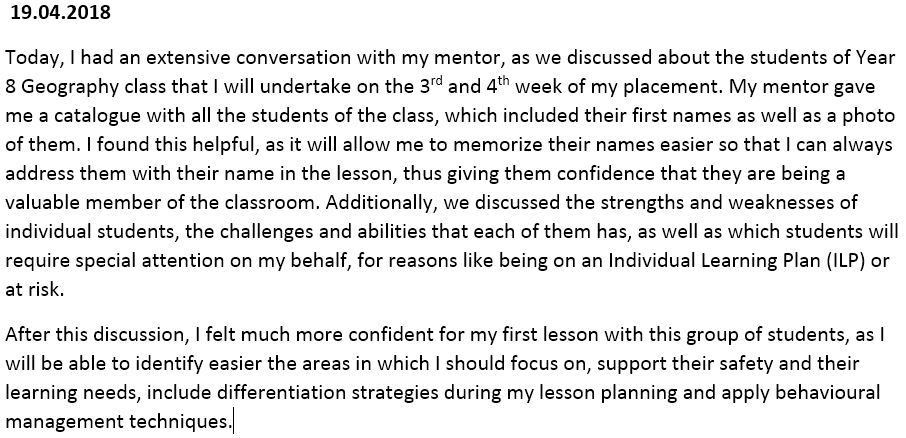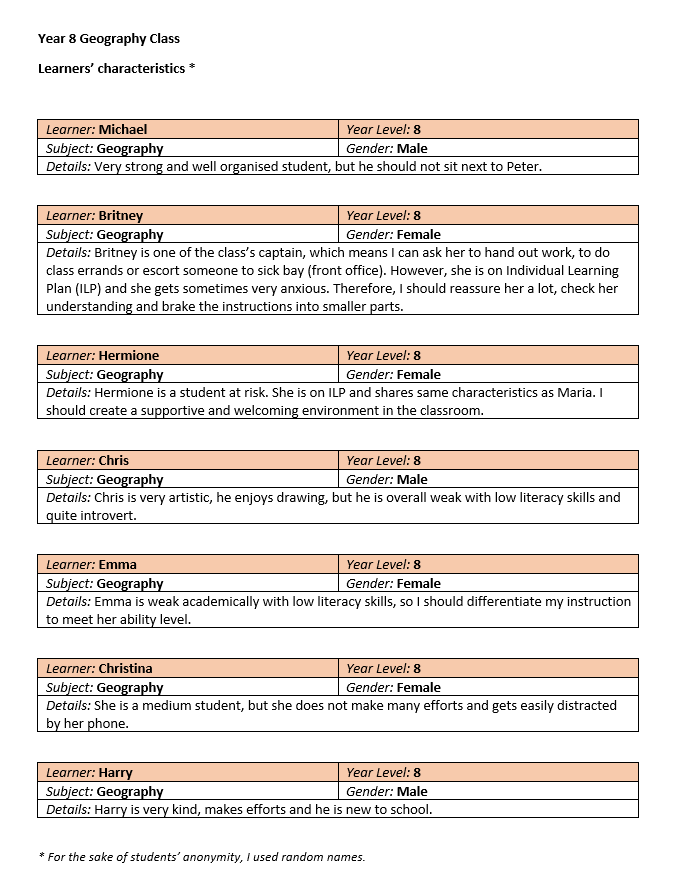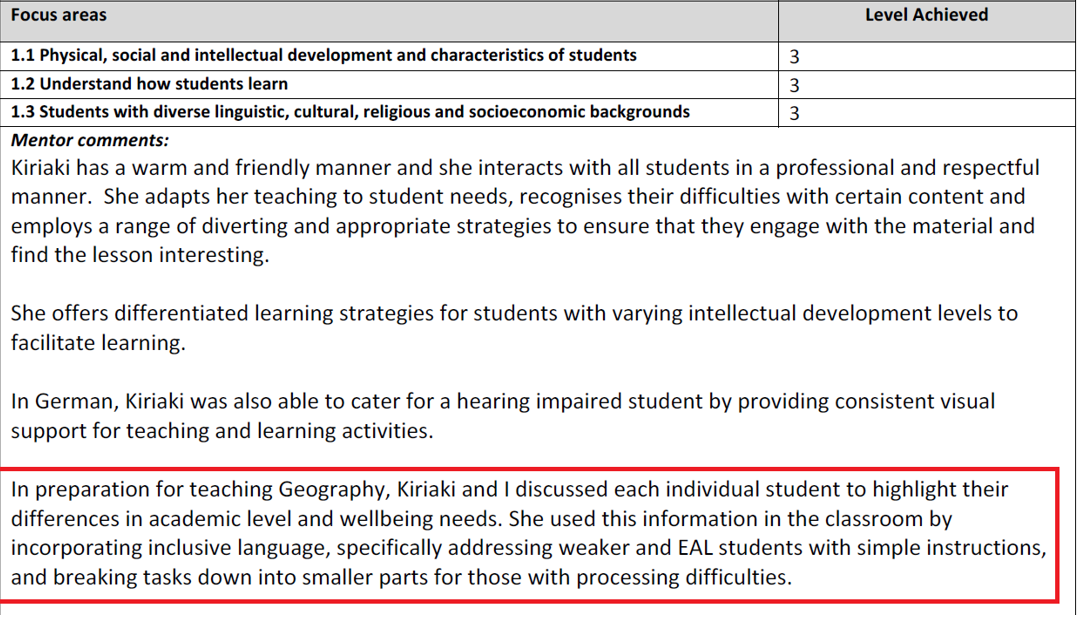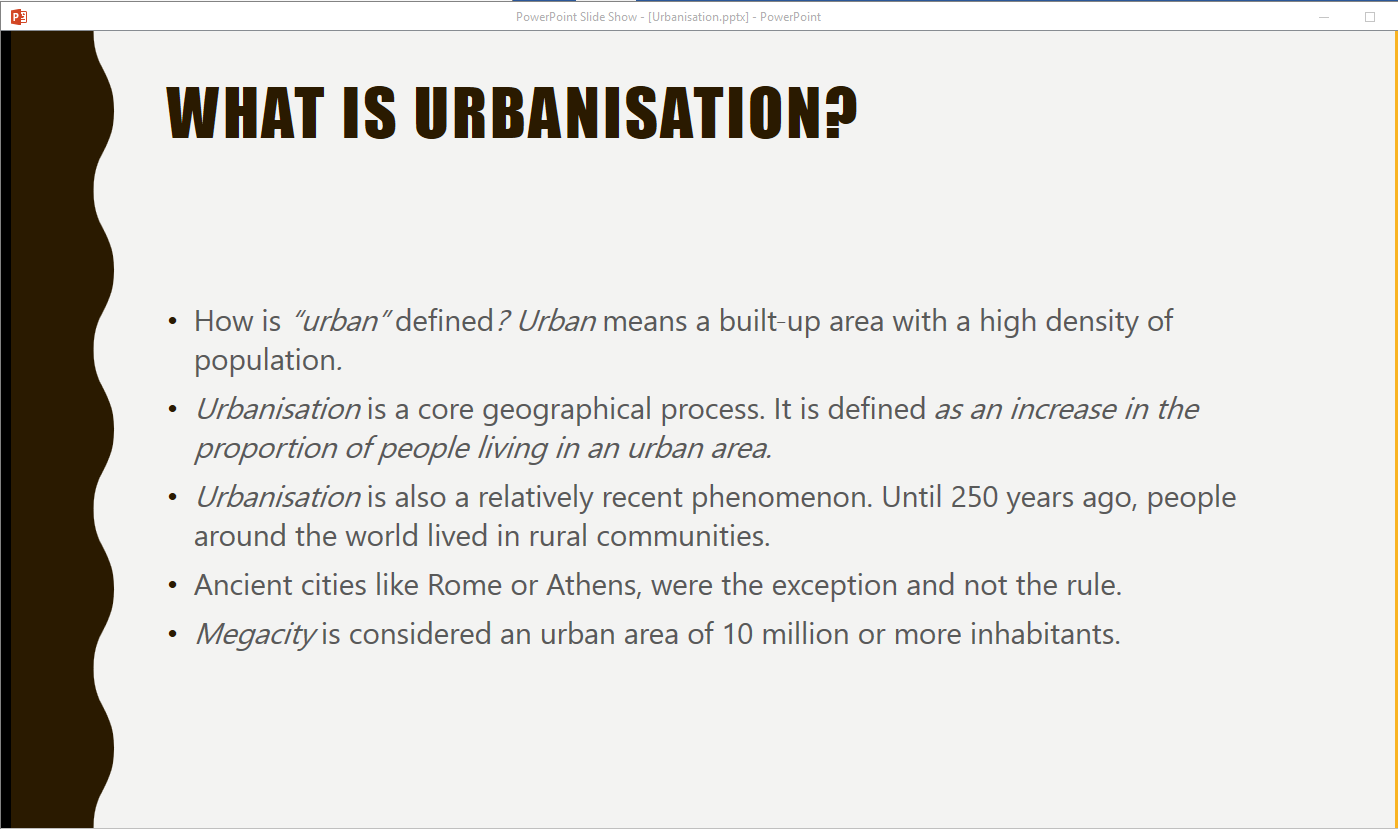Know students and how they learn
AITSL Standards 1.1, 1.2 & 1.3
Focus Areas
- Uses strategies to learn some of the differences within the group of students e.g., observation, discussion with Mentor, establishment of prior learning, assessment data
- Lessons are written and delivered with attention to catering for the range of the learning styles of students by using a range of activities
- Shows awareness of the use of inclusive language and strategies and implements these
Description
During my placement, I interacted with students exhibiting diverse backgrounds, abilities, behaviours and skills. In my school, half the student population had English as an additional language and these students were typically academically weaker and with lower literacy skills than their counterparts, who were native English speakers. It was, therefore, a challenge to organise inclusive lesson sequences and differentiate teaching practices, so that I could promote and scaffold students’ learning by accommodating all levels.
To achieve that for my Year 8 Geography class, I had an extensive discussion with my Mentor. I asked her about each student’s unique needs and particularities and consolidated this information into concisely formatted student profiles that summarized students’ weak and strong areas and special interests (Pictures 1.1, 1.2 & 1.3). The profiles were then used to create differentiated strategies in my lesson plans (Slider 1.1, Picture 1.4). This approach followed closely Hollins’ (2011) conclusion that the core of a successful teaching relies on educators understanding in depth their students and the conditions under which they perform best. Such knowledge can be funneled into making informed decisions on optimal content delivery and selection of appropriate pedagogical practices to apply in the classroom. In doing so, one is able to create a welcoming, engaging and supportive educational environment.
References
Hollins, R. E. (2011), Teacher preparation for quality teaching. Journal of Teacher Education, 62(4), 395 –407. doi: 10.1177/0022487111409415
Evidence Artefacts

Picture 1.1: My reflection after the discussion with my mentor on students’ profiles.

Picture 1.2: Part of work on organising students’ profiles.

Picture 1.3: Mentor’s report commenting on my performance in meeting students’ learning needs.
Slider 1.1: Lesson plan in Year 8 Geography class in which I differentiated the process and the content of the lesson to meet students’ diverse needs.




